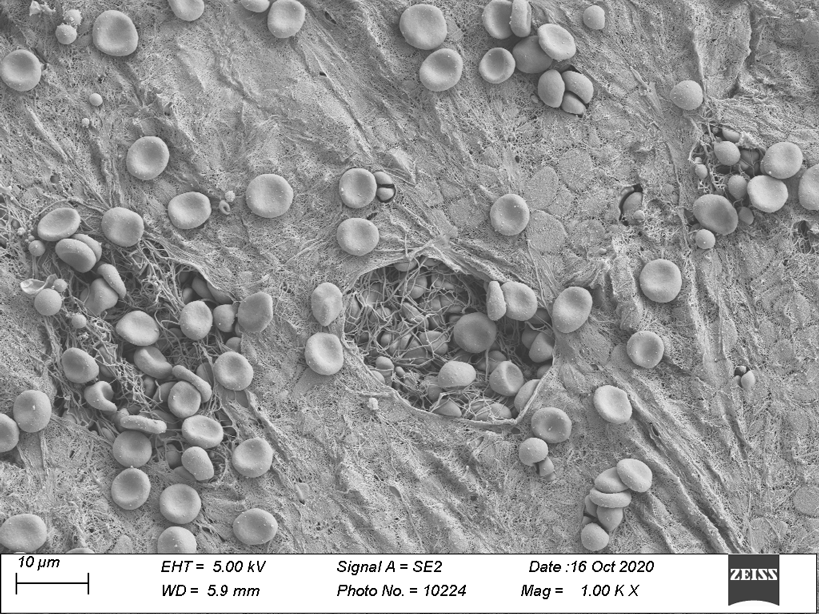[1045] Fibrinogen and Clot Structure

Properties and structure of fibrin clots are major determinant of coagulation. Abnormalities of fibrin clot can result in an increased tendency to bleed or a procoagulant state.
Our research projects are based on three main axes:
1) Patients with bleeding of unknown cause. We assess how the accumulation of minor alterations in fibrin clot structure, fibrinolysis, and pathway of coagulation inhibitor can switch the balance of hemostasis toward the bleeding side. The main objective of this project is to identify different biological patterns associated with bleeding of unknown cause compared to individuals without a bleeding phenotype. The main secondary objective is to investigate the mechanisms of the bleeding tendency for each subgroup of patients.
2) Patients with hereditary fibrinogen disorders. In collaboration with Professor Marguerite Neerman-Arbez's group, we are investigating the properties (polymerization, fibrinolysis, viscoelasticity, permeability) and structure (confocal and scanning electron microscopy) of the fibrin clot in relation to the presence of genetic modifiers (polymorphisms). We apply this model to prospectively determine the clinical phenotype of patients.
3) Patients with a procoagulant state. We use global hemostasis assays (thrombin and plasmin generation, spatial propagation of fibrin and thrombin, fibrin clot) to evaluate the thrombotic phenotype of patients with various pathologies (e.g., nephrotic syndrome, abnormalities of factor XIII, acute ischemia of lower limbs, myeloproliferative neoplasms) and various clinical context (taking contraception, medically assisted procreation, pregnancy, liver diseases).
